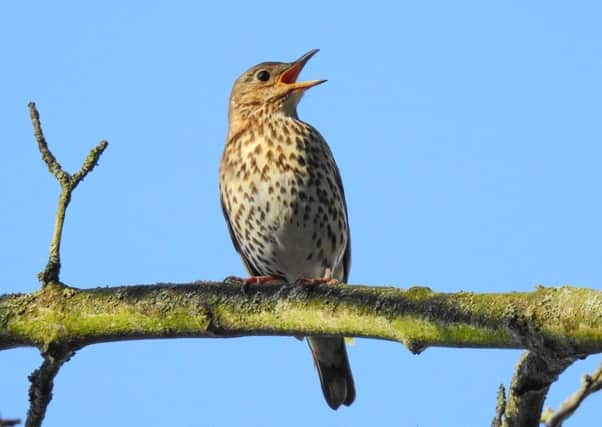Nature’s ‘anvils’ are crucial for birds seeking vital food supplies


I came across a good example of this last week while out walking in the Washburn Valley in the Nidderdale Area of Outstanding Natural Beauty after hearing a persistent bashing noise from the edge of Thruscross Reservoir.
A quick scan of the shore with binoculars soon led me to the sight of a song thrush with a snail in its beak repeatedly hammering the shell against a stone.
Advertisement
Hide AdAdvertisement
Hide AdThese stones are known as “thrush anvils” and it seems that individual birds use the same stone again and again.
Quite how long this song thrush had been attempting to bash the snail’s shell to smithereens in order to extract the mollusc I do not know, but roughly three minutes after my arrival on the scene it had succeeded in swallowing the snail whole and then flown off.
I went to take a look at the anvil and found a flat stone which had clearly been used several times judging by the large litter of shell fragments.
However, if my attention had been drawn to it by the hammering noise then so too would a predator’s such as sparrowhawk. A study has shown that song thrushes make up a higher percentage of the raptor’s diet of birds than the blackbird, which don’t use anvils, and it was suggested this might be because sparrowhawks ambush song thrushes at their anvils.
Advertisement
Hide AdAdvertisement
Hide AdIf you know you have song thrushes around your garden - and rarely see a sparrowhawk - it is worth placing a flat stone somewhere to see if you can witness this spectacle.
Other members of the thrush family do not use anvils, but it is not unknown for blackbirds to deploy a tool. I have heard of one being seen using a twig to sweep leaves to one side to reach the bare ground below and probe for food.
Apparently this behaviour has also been witnessed with American robins, though not - as far as I know - our own.
The title of ‘top DIY bird’, must, I think, go to the woodpecker finch in the Galapagos Islands. We know this thanks to remarkable film in an episode of David Attenborough’s 2011 series The Life of Birds. The programme’s camera crew managed to capture the bird breaking off a cactus spine then flying to a tree and using it to dig out insects which were out of reach beneath the bark.
Advertisement
Hide AdAdvertisement
Hide AdIt seems that some woodpecker finches keep a selection of different-sized cactus spines and select one of the appropriate length for the job.
Back in Yorkshire, besides song thrushes the most inventive method of getting at food is deployed by herring gulls and oystercatchers along the coast, picking up cockles or mussels in their beaks then flying over rocks and dropping them to smash the shells.
This technique has also been used by carrion crows with chestnuts and walnuts on roads. They sit on overhead cables, drop them beneath the wheels of traffic then go down to pick up the now exposed nut.